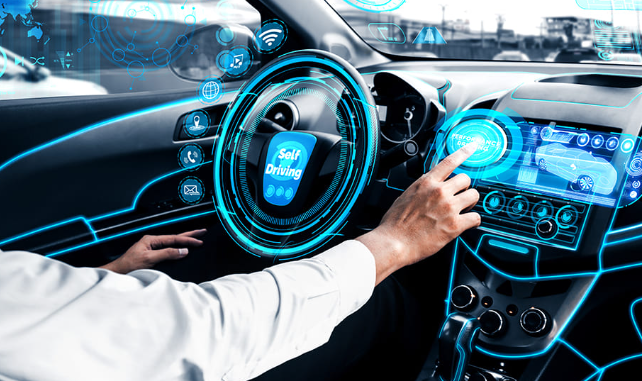
Introduction
The automotive industry is undergoing a profound transformation, propelled by advancements in technology that promise to redefine how we drive and interact with our vehicles. The rise of autonomous driving and connected cars represents a paradigm shift, offering unprecedented convenience, safety, and efficiency. In this in-depth exploration, we will delve into the future of automotive technology, focusing on autonomous driving and connected cars, unraveling the innovations, benefits, challenges, and the transformative impact they are set to have on our lives.
**1. Autonomous Driving: A Revolution on Wheels
Autonomous driving technology is at the forefront of automotive innovation. We will explore the evolution of self-driving cars, from basic driver-assist features to fully autonomous vehicles. Understanding the levels of autonomy and the underlying technologies, including sensors, artificial intelligence, and machine learning algorithms, is crucial to comprehending the future landscape of autonomous driving.
2. The Benefits of Autonomous Driving
Autonomous vehicles promise a plethora of benefits, ranging from improved road safety and reduced traffic congestion to enhanced mobility for individuals with disabilities. We will delve into these advantages, examining how self-driving cars have the potential to transform urban transportation and significantly reduce the number of accidents caused by human error.
3. Connected Cars: Vehicles in the Internet of Things (IoT)
Connected cars are vehicles integrated into the Internet of Things (IoT) ecosystem. We will explore how these cars communicate with each other, infrastructure, and various devices, ushering in a new era of convenience and efficiency. From real-time traffic updates to predictive maintenance, connected cars offer a wide array of features that enhance the overall driving experience.
4. Enhancing User Experience: Infotainment and Smart Interiors
The interior of cars is evolving into a smart, connected space. We will discuss how infotainment systems, voice assistants, and augmented reality interfaces are reshaping the way drivers and passengers interact with vehicles. Additionally, we will explore the concept of smart interiors, where advanced sensors and AI create personalized, comfortable driving experiences.
5. Challenges and Concerns
Despite the promising future, autonomous driving and connected cars bring their share of challenges. We will address concerns related to data privacy, cybersecurity, regulatory hurdles, and the ethical dilemmas associated with self-driving cars, examining the industry’s efforts to overcome these obstacles.
6. The Impact on Urban Mobility and Environment
The widespread adoption of autonomous and connected cars is poised to transform urban mobility. We will explore how these technologies can alleviate traffic congestion, reduce emissions, and optimize transportation systems. Additionally, we will discuss the potential environmental impact, including the reduction of greenhouse gas emissions and the shift toward electric and sustainable vehicles.
7. Industry Innovations and Key Players
The automotive industry is witnessing a surge in innovation. We will highlight key players, both established automakers and tech companies, who are leading the charge in developing autonomous driving and connected car technologies. From Tesla’s self-driving capabilities to Google’s Waymo project, we will delve into the groundbreaking initiatives shaping the future of automotive technology.
8. The Road Ahead: Regulation and Standardization
The future of autonomous driving and connected cars hinges on comprehensive regulations and industry-wide standardization. We will discuss the current state of regulatory frameworks worldwide and the efforts to establish uniform standards, ensuring the safe and seamless integration of these technologies into our daily lives.
9. Consumer Adoption and Education
Consumer adoption is a pivotal factor in the success of autonomous and connected cars. We will explore the importance of consumer education, addressing concerns, building trust, and fostering acceptance of these technologies. Additionally, we will discuss the role of education in ensuring responsible use and understanding of the capabilities and limitations of autonomous vehicles.
10. The Future Landscape: Integration with Smart Cities and Emerging Technologies
Looking ahead, we will explore the integration of autonomous driving and connected cars with smart city initiatives and emerging technologies. From 5G connectivity to artificial intelligence-powered traffic management, we will paint a picture of the interconnected future where vehicles, infrastructure, and technology collaborate to create safer, more efficient urban environments.
Conclusion
The future of automotive technology, marked by autonomous driving and connected cars, is poised to revolutionize the way we commute, travel, and experience mobility. As these innovations continue to advance, the automotive industry is on the brink of a transformative era that will enhance road safety, reduce emissions, and redefine the driving experience. By understanding the intricacies, challenges, and potential benefits of autonomous driving and connected cars, individuals, industries, and policymakers can actively prepare for and contribute to this exciting future, steering us toward a safer, more connected, and sustainable automotive landscape.

Leave a Reply